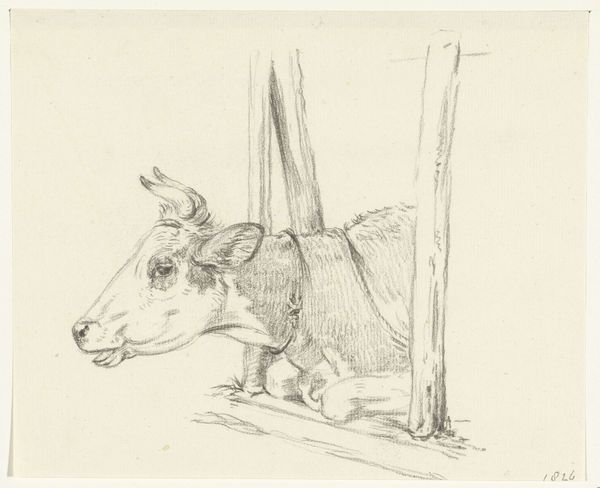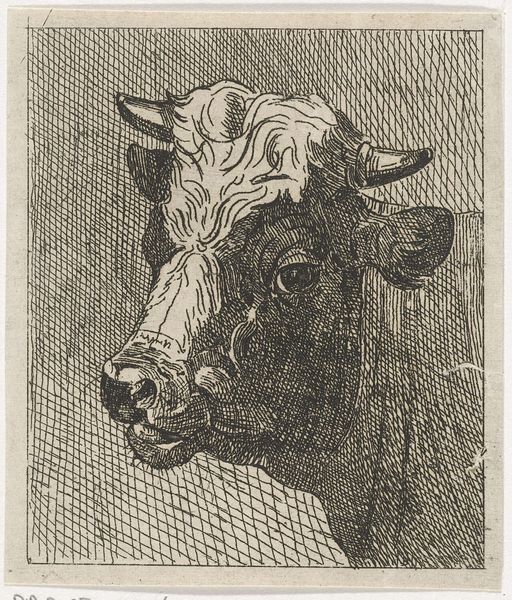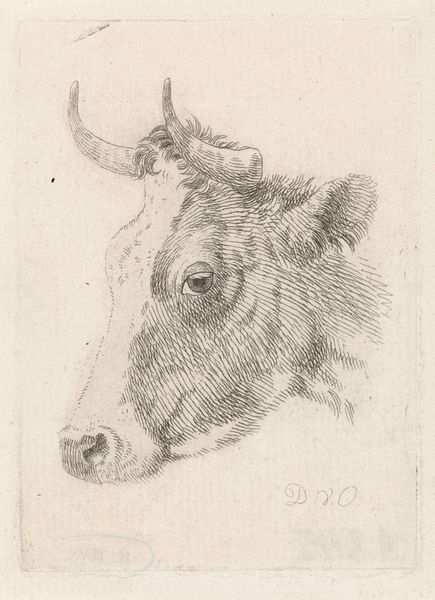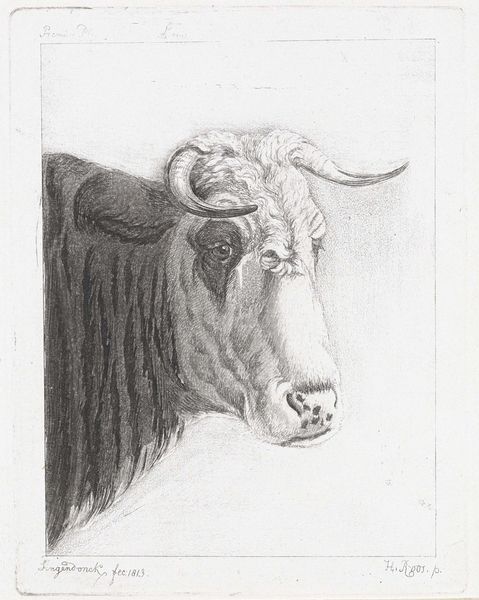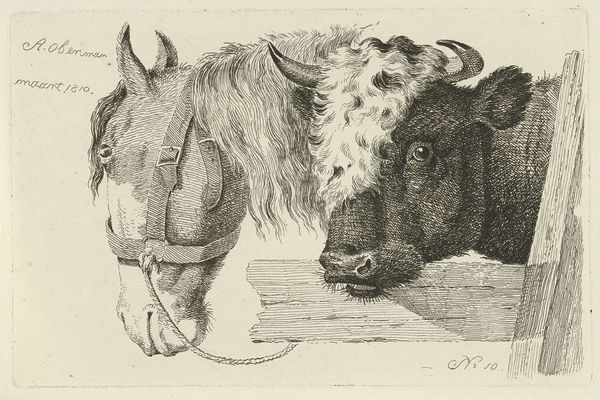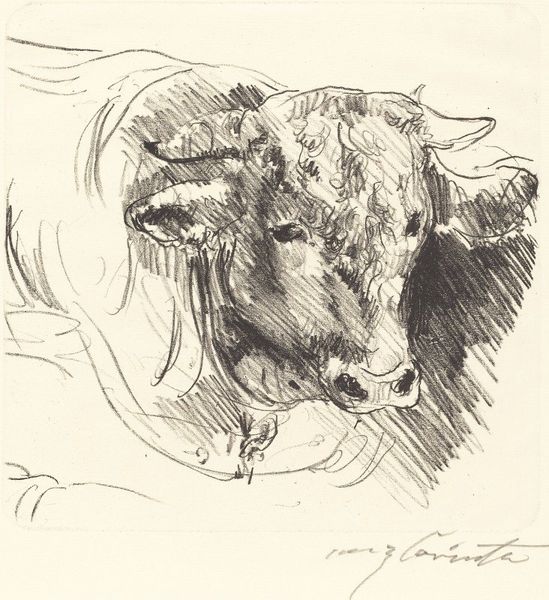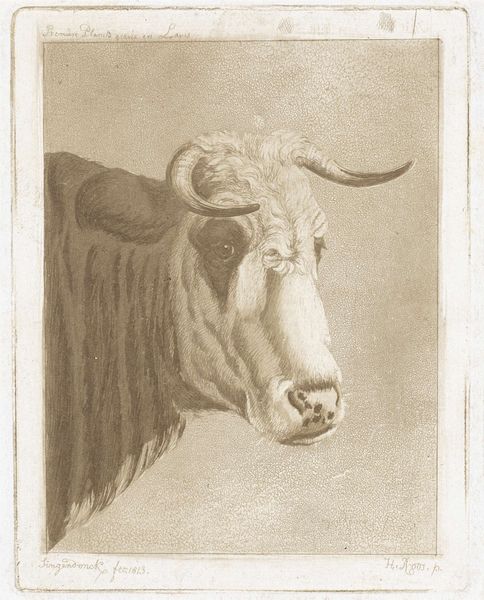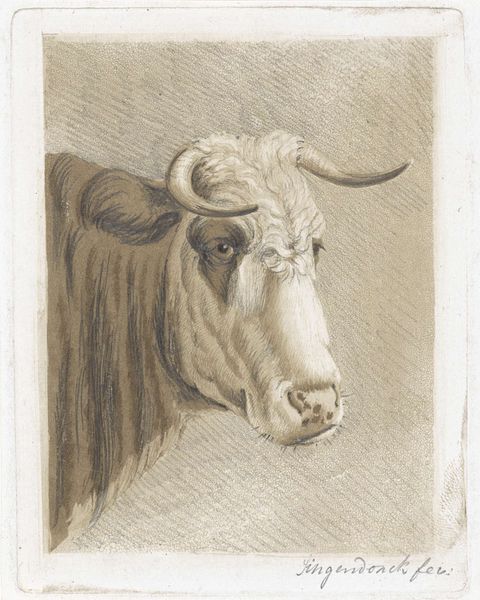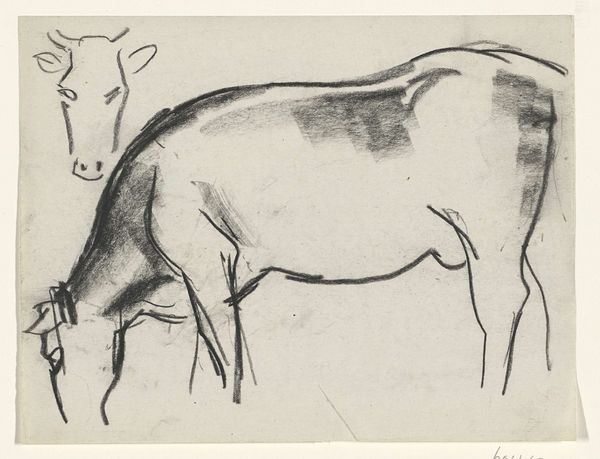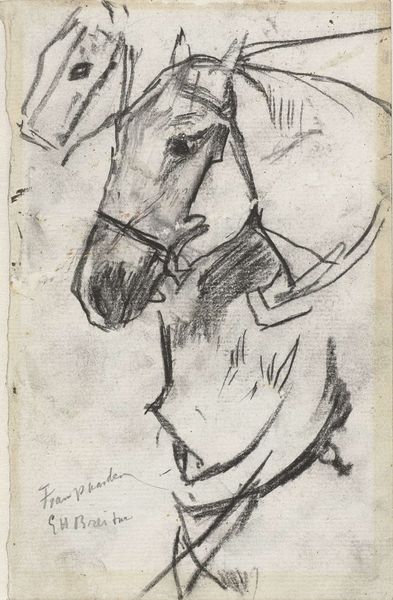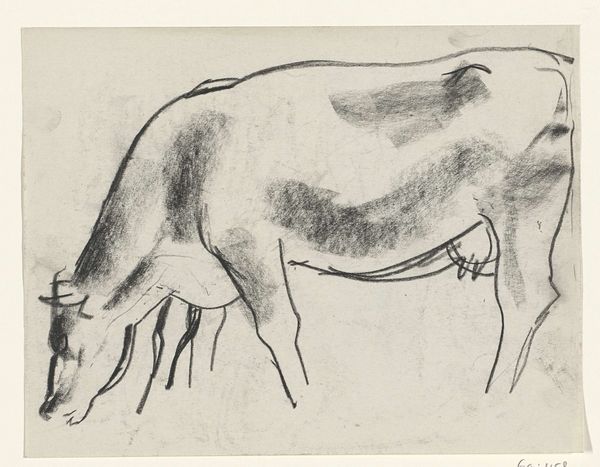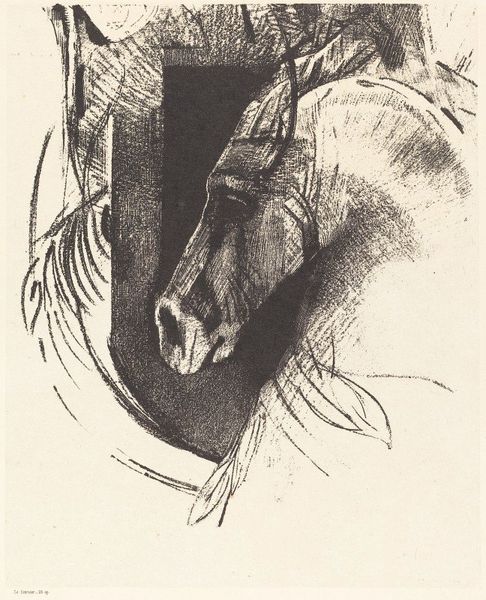
drawing, print, engraving
#
drawing
#
animal
#
dutch-golden-age
# print
#
pencil drawing
#
romanticism
#
engraving
#
realism
Dimensions: width 119 mm, height 152 mm
Copyright: Rijks Museum: Open Domain
Gijsbertus Craeyvanger etched this head of a cow in 1846. The most striking symbolic element is the cow itself, an animal that has held various meanings across cultures, often linked to fertility, nourishment, and maternal qualities. The cow is also a symbol of sacrifice, reminiscent of ancient rituals where animals were offered to deities. Consider the echoes of the Egyptian goddess Hathor, often depicted with bovine features, embodying motherhood and abundance. Looking at this etching, we might consider the connection to the Golden Calf in the Old Testament, representing idolatry and forbidden worship. Across time, the symbol of the cow has been passed down, evolving, and taking on new meanings in different historical contexts. Craeyvanger’s depiction connects us to both the primal, nurturing aspects of life and to our collective memory of ritual, transgression, and reverence. It reminds us of the cyclical progression of symbols, and how they resurface, transform, and gain new significance as time passes.
Comments
No comments
Be the first to comment and join the conversation on the ultimate creative platform.


